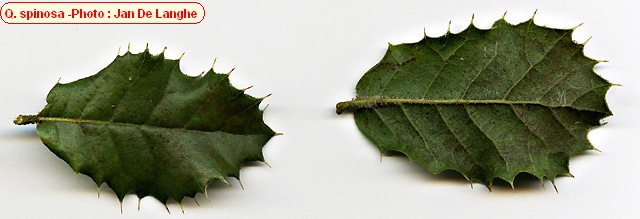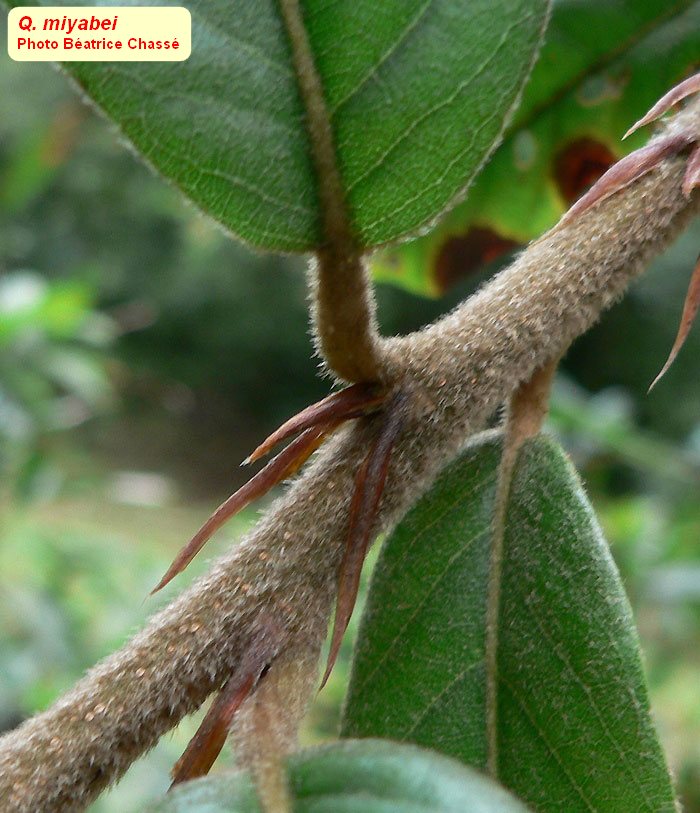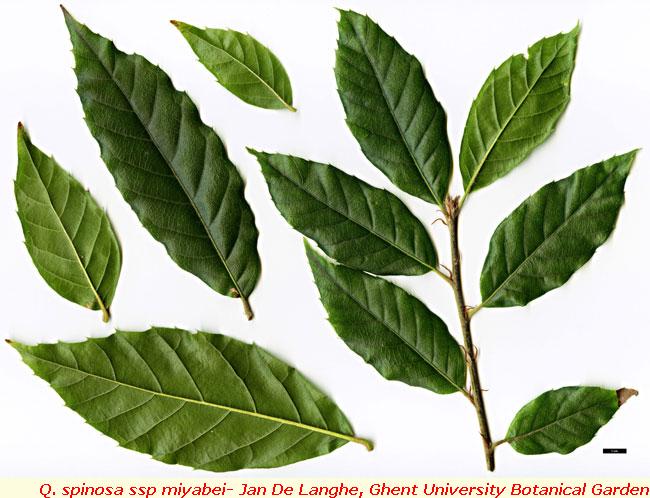| Quercus spinosa | |
| Author | David ex Franch. 1884 Pl. David. 1: 274 |
| Synonyms | bullata Seemen 1897 ilex var. bullata (Seemen) Franch. 1899 gilliana Rehd. & Wils. 1916 Pl. Wilson. 3: 223 (Camus : n° 98) ilex L. var. spinosa (David ) Franchet 1899 ilicioides David 1898 semecarpifolia var. spinosa (David ) Schottky 1912 |
| Local names | ci ye gao shan li ; |
| Range | China; Myanmar; Taiwan; 1000-3100 m; introduced in Europe by Wilson (under the name Q.gilliana); |
| Growth habit | 4-10
metres tall (may reach 20 m); |
| Leaves | 2.5-7
x 1.5-4 cm; lasting 2 years; oboval to elliptic; leathery; dark green;
apex obtuse (sometimes pointed in Taiwan, see below); base subcordate;
epidermis bullate; margins toothed or sometimes entire; base of midrib
densely hairy (simple and fascicled hairs) beneath; adaxially some multiradiate
hairs; 4-8 vein pairs, sunken above; petiole 1-3 mm long; |
| Flowers | May
to August; pistillate inflorescences 1-3 cm long; |
| Fruits | acorn
1.2-2 cm long, 1 cm wide; ovoid globose; enclosed 1/3 by cup; cup with
triangular, 1-1.5 mm long, grey pubescent (except near apex) scales ;
maturing in 2 years; |
|
Bark, twigs and |
young
twigs covered with yellow brown stellate hairs, glabrescent; |
| Hardiness zone, habitat | hardy;
mountain forests; |
| Miscellaneous | --
A.Camus n° 97; -- Sub-genus Cerris, Section Ilex; -- For Govaerts & Frodin, 1998, Q. gilliana is a true species, whose leaves lack hairs at base of midrib beneath ; Tibet and in China (Sichuan, Yunnan, Gansu). -- See the Key of Asian similar Quercus. |
| Subspecies and varieties |
There
are 2 subspecies : 1/ subsp spinosa the type described 2/ subsp miyabei (Hayata) A.Camus 1938 Chênes Texte 1: 409 = Q.miyabei Kawak. ex Hayata 1918 = Q. spinosa var. miyabei Hayata 1918 = Q. semecarpifolia var. miyabei (Hayata) S.S.Ying 1988 = Q.taiyunensis Ling = Q.tatakaensis Tomiya 1944 = Q. semecarpifolia f. tatakaensis (Tomiya) J.C.Liao 1970 named after plants from Taiwan Mountains; larger leaves (6.5-15 cm) with pointed apex; as these plants occur among populations of the type species, their taxonomic rank is uncertain... |
| Pictures |
|




.jpg)
.jpg)






